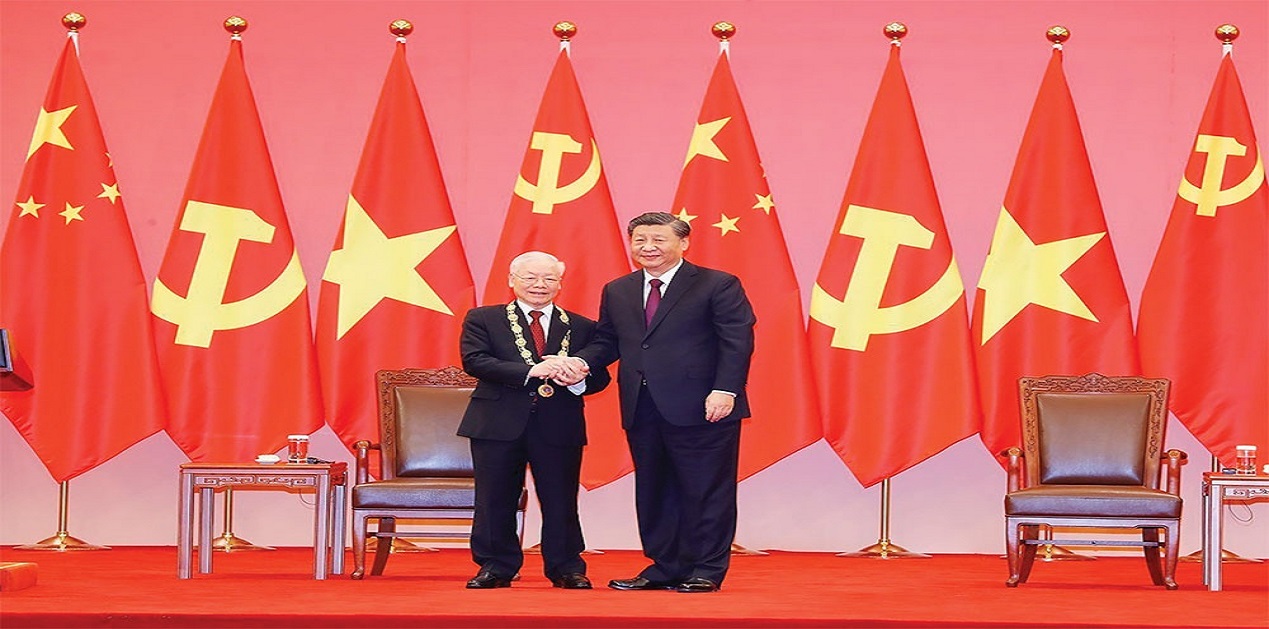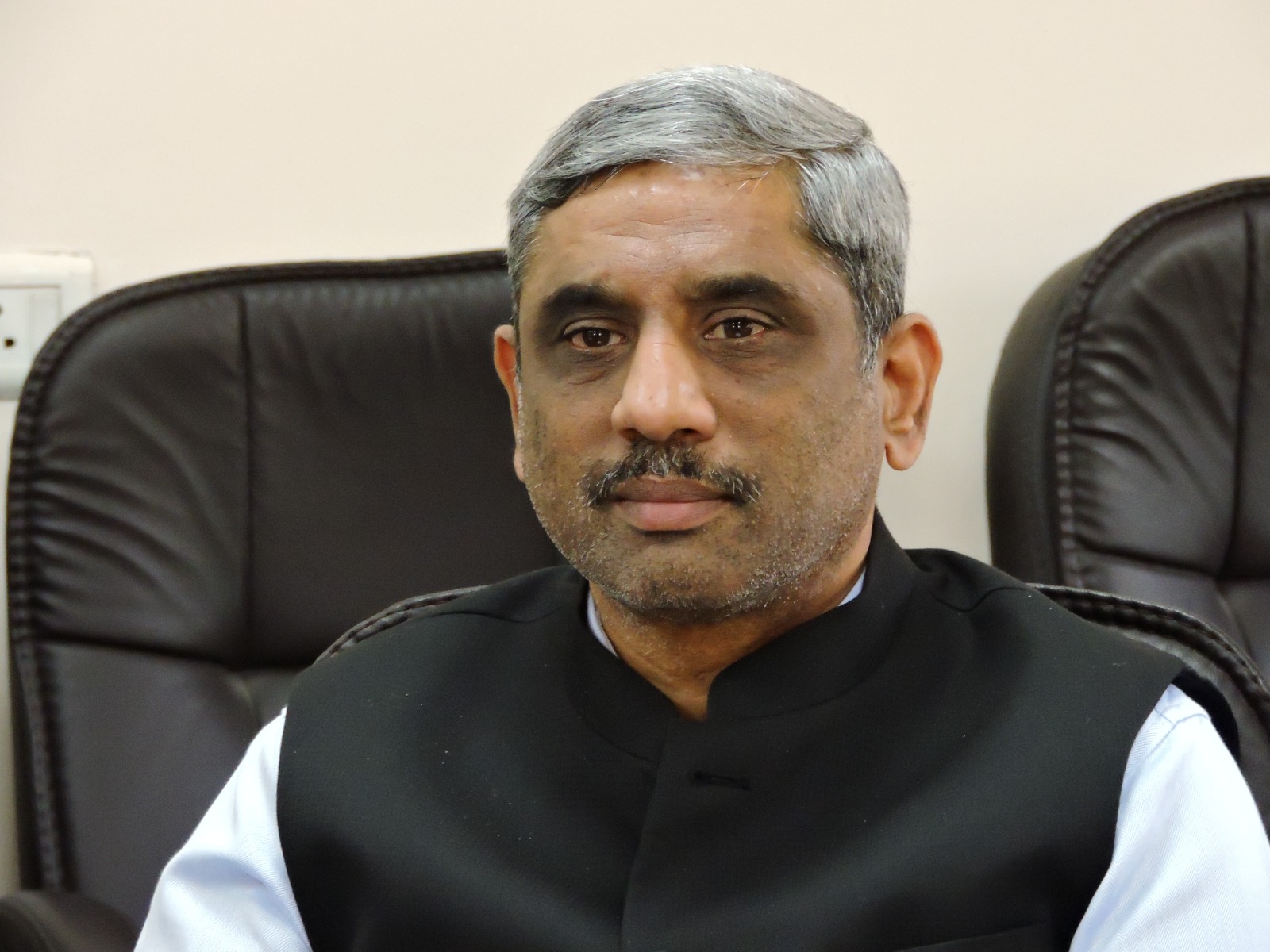General Secretary Xi Jinping visited Vietnam for about 30 hours on 12– 13 Dec 23, with a jam-packed schedule, meeting his comrades from the Communist Party of Vietnam (CPV) in addition to the political leadership of an important country on China’s periphery. This is Xi’s third visit to Vietnam with the earlier ones taking place in November 2015 and November 2017[1]. Xi, from the commencement of his leadership has emphasised that “peripheral countries have important strategic meanings for China's development”, and the strategic objective for peripheral diplomacy is to “realise the great rejuvenation of Chinese nation”[2]. Vietnam, while being a Communist country, has had a fairly rocky relationship with China, going back to the Sino-Vietnam war of 1979 and the continuing maritime dispute in the South China Sea. Vietnam is also on the periphery of the US-China rivalry with the US and its allies actively courting the country in their quest for balancing China in the region. Xi’s visit to Vietnam was clearly aimed at strengthening ties with this important “peripheral” country in the face of an increased global wariness of China and its ambitions.
President Xi commenced his visit to Vietnam by meeting with the General Secretary of the CPV, Nguyen Phu Trong, which set the direction for future bilateral relations between the two countries. An important outcome of this meeting was the establishment of the “China-Vietnam community with a shared future that carries strategic significance on the basis of deepening the comprehensive strategic cooperative partnership”[3]. This theme underlined all subsequent meetings that Xi had with the Vietnamese leadership which included the Chairman of the National Assembly of Viet Nam Vuong Dinh Hue, Prime Minister Pham Minh Chinh and the President of Viet Nam Vo Van Thuong. The consequent thrust for taking forward the bilateral relationship has been outlined along six directions. The two countries also signed 36 documents for cooperation in various domains, including Belt and Road, development cooperation, digital economy, green development, transportation, law enforcement and security cooperation and maritime cooperation. The joint statement following the visit follows the same tenor and outlines actions to be taken to maintain this thrust[4].
Strengthening political engagement, especially at the party and government levels is the primary direction, which is in keeping with the past trend of bilateral relations. Vietnam’s endorsement of China’s global initiatives like the Global Development Initiative, the Global Security Initiative and the Global Civilisation Initiative, at the party level is a boost for China as it seeks acceptance as a global player. Notwithstanding, Vietnam does not appear to have committed for any substantial cooperation under these initiatives barring the readiness to “study the implementation of cooperation within the (Global Security) initiative”.
Deepening mutual trust in the defence and security domain is another direction of effort even as the two agreed to manage their differences in the maritime domain, where there are serious disputes. While there has been no commitment on resolving the maritime dispute in the South China Sea, barring the usual agreement to implement the Declaration of the Conduct of Parties in the East Sea (DOC) and to continue working towards an early conclusion of the Code of Conduct (CoC), the two agreed to accelerate discussions towards joint development in other regions like the Gulf of Tonkin, where they carry out joint maritime patrols. On the other hand, the agreement on enhancing engagement in the security domain appears intended to balance Vietnam’s engagement with the West which has seen the US Navy visiting Vietnam and the Japanese providing material aid[5]. The agreement also involves cooperation between the two defence industries, joint exercises and mutual ships visits between the two navies and coast guards.
Another major thrust area is economic engagement which has witnessed a rising trajectory over the past decade. China has been Vietnam’s largest trading partner with the bilateral trade standing at about USD 118 billion in 2022 and the first ten months of the current year already logging USD 90 billion[6]. The joint statement emphasised on synergising Vietnam’s national development strategy of "Two Corridors, One Belt" with the Belt and Road Initiative (BRI). Attaining synergy with national development plans of partner countries has been a major objective of Xi’s pet project over the last decade as it assures a deep entrenchment of the BRI in the host country. The current agreement also appears to prioritise connectivity with the two sides promoting railway connectivity across the Vietnam-China border, and agreeing to study the feasibility of similar connectivity within Vietnam. However, the modalities of undertaking such projects have not been outlined, possibly because of the BRI’s current trend of scaling down projects as also Vietnam’s suspicion of Chinese investment in critical areas. Chinese investment in Vietnam has been rather moderate over the past five years with just about USD 2.3 – 2.5 billion every year[7]. On the trade front, China has agreed to “actively accelerate” opening up its market for Vietnamese agricultural products, which is indicative of the trend of past reluctance on such issues, though such reluctance is not restricted to Vietnam alone.
The current visit also saw a distinct outreach to the Vietnamese population with President Xi penning an article in the Vietnamese Nhan Dan newspaper on the eve of his visit[8]. While such articles by Xi are not an exception during his visits, the emphasis on the building of a ‘community with a shared future for mankind’ clearly underlined the importance that China attaches to its periphery and the populace therein. The joint statement also highlighted the Vietnam - China Plan on Cultural and Tourism Cooperation for the 2023 - 2027 to increase cultural and tourist exchanges.
President Xi’s visit to Vietnam was clearly aimed at leveraging ties between the two communist parties to countervail Vietnam’s increasing alignment with the US and its allies on issues that affect China. It also served to push forward Xi’s pet project of a ‘community with a shared future for mankind’. Acceptance of the concept in China’s neighbourhood is a political necessity for Xi, for its acceptance in the larger world and it also serves China’s purpose of pushing forward the concept at multilateral bodies like the UN as also for Xi’s personal ambitions of being viewed as a global statesman. Vietnam’s presence in the Group of Friends of the Global Development Initiative, another Xi project, adds heft to the global pitch for the ‘Community with a Shared future for Mankind’. Whether such acceptance will actually translate into tangible deliverables remains doubtful, especially in Vietnam, when viewed in the context of another Chinese initiative, the BRI. Vietnam has, over the past decade of the BRI, received only USD 8.25 billion in Chinese investment under this umbrella as against the USD 113.1 billion in the larger South East Asia. Countries like Indonesia and Singapore have attracted much larger investment at about USD 35.5 billion and USD 27 billion respectively during the same period[9]. However, considering the current global mood of ‘de-risking’ and diversifying from China and the increasing propensity for a ‘China+1’ in this context, Vietnam appears to be an attractive proposition for China to re-trench some of its capacities in global value chains to continue retaining its competitive edge in this domain. This could, along with a perceptible political push, incentivise Chinese as also Vietnamese industry to harness capabilities in this realm and thereby provide an impetus to Chinese investment in Vietnam. On the more difficult issues of maritime disputes, there has been a perceptible reduction or dialing down of Chinese maritime aggression vis-à-vis Vietnam over the past year or so, possibly intended to generate convergence on the larger issues of political importance. While the current agreement aims to enhance dialogue between the militaries, especially the navies and the coast guard of the two countries, the Chinese propensity to assert their ‘core interests’ will cause frictions. However, the creation of bilateral military dialogue mechanisms, coupled with increased interaction, can prevent spiralling of these tensions into diplomatic imbroglios. Nevertheless, the intractable positions of the two countries in the maritime dispute as also the multilateral nature of these frictions are unlikely to yield any benefit to China in influencing positions on issues like the CoC. Xi’s visit will, in the overall context, yield some mileage for China to milk in its global ambitions, but is unlikely to greatly affect the current trajectory of Vietnam – China relations.
References
[1] ‘Foreign Minister Wang Yi's Comments on President Xi Jinping's State Visits to Viet Nam and Singapore’, 08 Nov 15.https://www.fmprc.gov.cn/eng/gjhdq_665435/2675_665437/2792_663578/2794_663582/201511/t20151110_525596.html. Accessed on 15 Dec 23.
‘Foreign Minister Wang Yi Talks about President Xi Jinping's Attendance at the 25th APEC Economic Leaders' Meeting and State Visits to Vietnam and Laos’, 14 Nov 17. https://www.fmprc.gov.cn/eng/gjhdq_665435/2675_665437/2792_663578/2794_663582/201711/t20171116_525764.html. Accessed on 15 Dec 23.
[2] ‘Speech of Xi Jinping at Peripheral Diplomacy Work Conference’, 30 Oct 13.
http://www.cciced.net/cciceden/NEWSCENTER/LatestEnvironmentalandDevelopmentNews/201310/t20131030_82626.html. Accessed on 17 Jan 20
[3] ‘General Secretary and President Xi Jinping Holds Talks with General Secretary of the CPV Central Committee Nguyen Phu Trong’, 12 Dec 23.
https://www.fmprc.gov.cn/mfa_eng/zxxx_662805/202312/t20231213_11201272.html. Accessed on 14 Dec 23
[4] ‘Vietnam, China Issue Joint Statement’, VNA , 13 Dec 23.https://e.vnexpress.net/news/news/vietnam-china-issue-joint-statement-4688439.html. Accessed on 14 Dec 23
[5] ‘Japan and Vietnam Upgrade Security Ties With Eye On China’, Yuki Fujita and Yuji Nitta, Nikkei staff writers, 28 Nov 23. https://asia.nikkei.com/Politics/International-relations/Japan-and-Vietnam-upgrade-security-ties-with-eye-on-China. Accessed on 30 Nov 23.
[6] ‘15 years of Vietnam - China's Comprehensive Strategic Partnership’, Nhu Tam, Hoang Khanh, 12 Dec 23. https://e.vnexpress.net/infographics/news/15-years-of-vietnam-china-s-comprehensive-strategic-partnership-4687955.html. Accessed on 14 Dec 23.
[7] ‘Chinese investments to shoot up after Xi’s Vietnam visit’, Phuong Anh, 15 Dec 23. https://e.vnexpress.net/news/business/economy/chinese-investments-to-shoot-up-after-xi-s-vietnam-visit-analysts-4689216.html. Accessed on 16 Dec 23
[8] Building a China-Viet Nam Community with a Shared Future That Carries Strategic Significance And Writing Together a New Chapter in Our Modernization Drive’, 12 Dec 23. https://www.fmprc.gov.cn/mfa_eng/zxxx_662805/202312/t20231212_11199875.html. Accessed on 14 Dec 23
[9] Figures collated by the author using data from the American Enterprise Institute Chinese Global Investment Tracker (Spring 2023). https://www.aei.org/china-global-investment-tracker/. Accessed on 20 Oct 23.
(The paper is the author’s individual scholastic articulation. The author certifies that the article/paper is original in content, unpublished and it has not been submitted for publication/web upload elsewhere, and that the facts and figures quoted are duly referenced, as needed, and are believed to be correct). (The paper does not necessarily represent the organisational stance... More >>
Image Source: https://vir.com.vn/stores/news_dataimages/2022/112022/13/15/agreements-head-historic-china-visit-20221113155621.jpg?rt=20221113155623











Post new comment